Wild rice can be conveniently prepared in a rice cooker for a quick and simple addition of a healthy and delicious ingredient to your dishes. It gives a distinctive texture and flavor that can improve your dishes, even though a lot of individuals opt for brown and white rice in their rice cooker. This article highlights methods of cooking wild rice in a rice cooker.
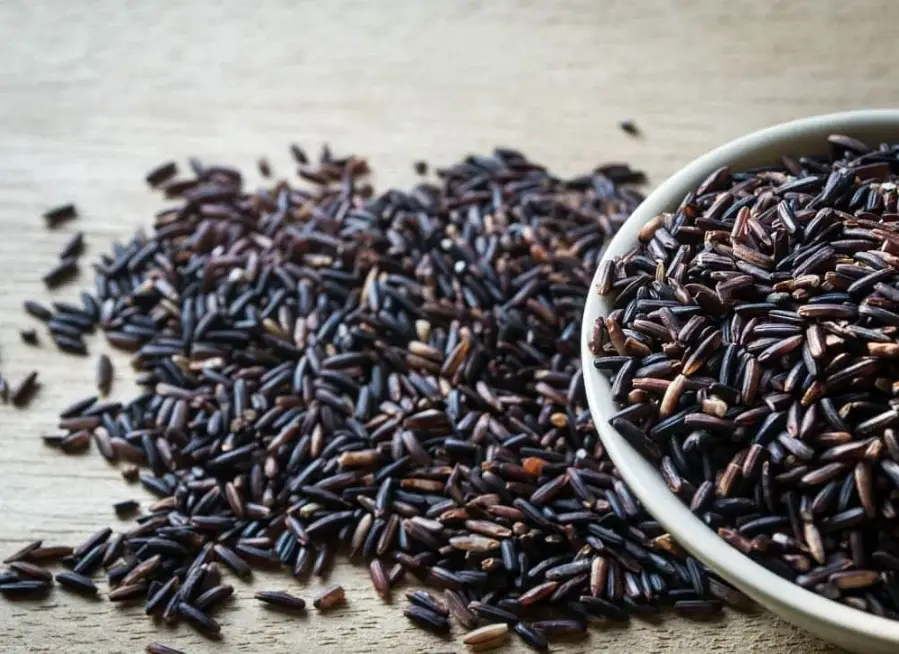
What is wild rice?
In reality, it is a semi-aquatic grass that is indigenous to North America rather than rice. A majority of adequately stocked supermarkets have it in the grain section.
Cooked wild rice has a creamy interior and a wonderfully nutty flavor, which makes it outstanding.
Numerous individuals love wild rice because, in addition to having low fat and calorie content, it is also incredibly nutritious and an excellent source of dietary fiber and protein. The key to making light, perfectly cooked wild rice in a rice cooker is to utilize the appropriate quantity of water. You can cook wild rice in a rice cooker similarly to other kinds of rice.
What sets wild rice apart from white rice?
There is a substantial distinction between white and wild rice. Compared to brown and white rice, it is lower in calories, fat, and carbs. Also, it is nutrient-dense, particularly in protein and manganese. Because it is naturally gluten free, it supports bone wellness, cardiovascular wellness, and energy levels.
For the health and construction of bones, teeth, and soft tissues as well as for the proper operation of the neurological and muscular systems, it is crucial to consume meals high in minerals.
White rice doesn’t contain protein as wild rice does. There are 4 grams of protein in one cup of cooked white rice and around 7 grams in one cup of cooked wild rice. Even with brown rice, a popular substitute is less than that.
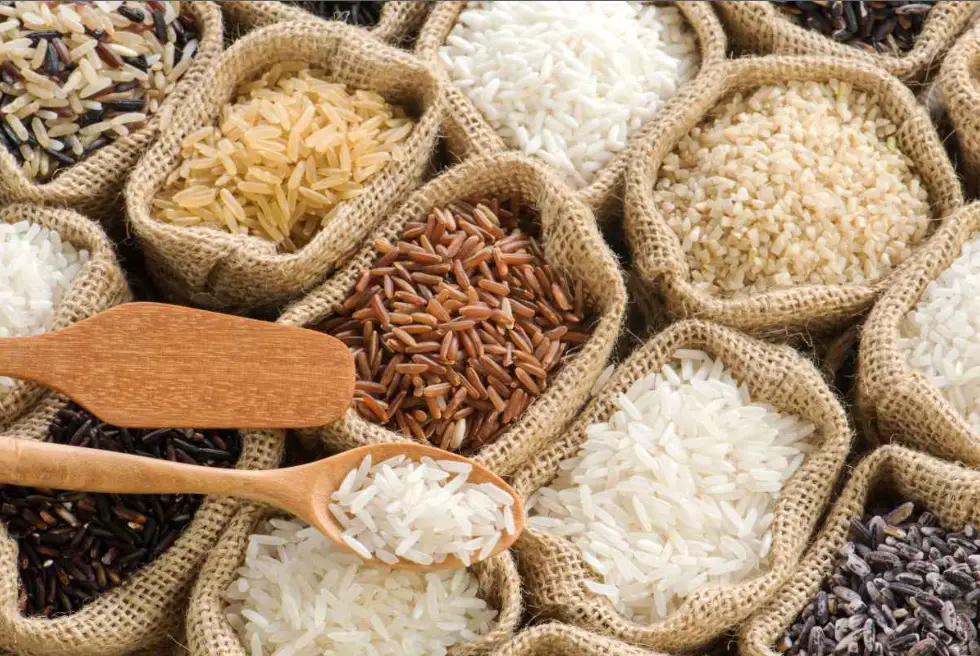
Why cooking wild rice in a rice cooker is advisable
We already know that it is a nourishing grain that tastes great and can be prepared in several ways, but there is one drawback: it can be challenging to prepare. But if you adhere to a couple of easy instructions, cooking wild rice in a rice cooker is unquestionably the most efficient method because it consistently produces fantastic results.
Following the addition of the wild rice and water, you must choose the appropriate setting (the majority of high-quality cookers have a specific cooking program for wild rice) and then patiently wait for it to be fully cooked.
Due to the rice cooker method, you are free to prepare other meals or take a rest while you cook wild rice. It is a nutritious and filling alternative for every meal because it preserves its essential nutrients.
Another benefit of using a rice cooker to cook wild rice is that you get evenly cooked wild rice. There is no chance of the rice being undercooked or overcooked because every grain is thoroughly prepared.
Finally, controlling the texture of the finished dish is made simpler by utilizing a rice cooker for cooking wild rice. You can adjust the firmness or softness of your wild rice to suit your palate.
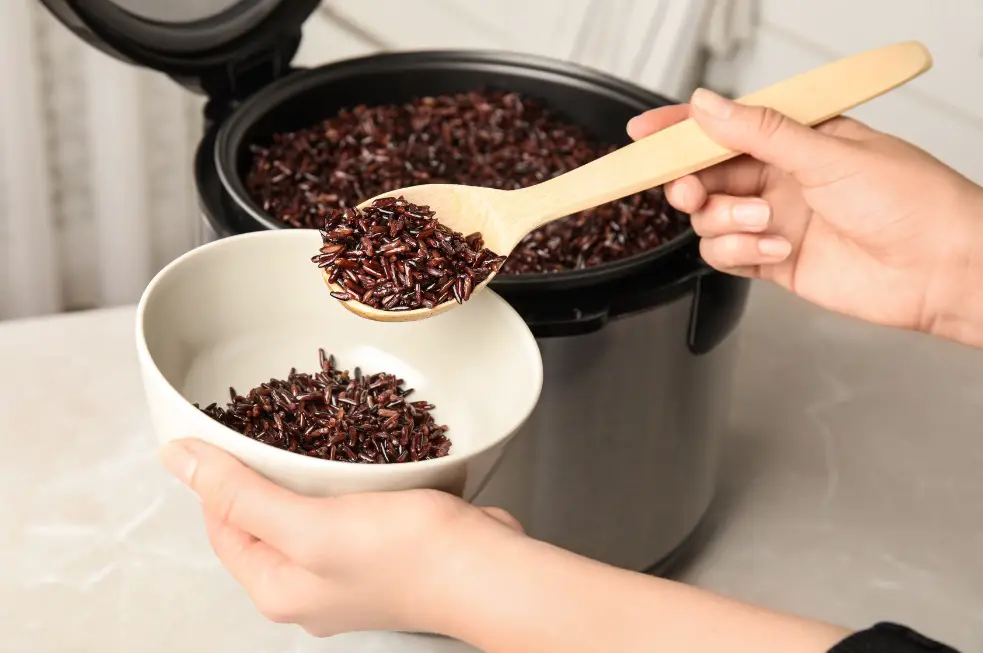
Rice cooker types
It comes in two primary categories: traditional and digital. Traditional rice cookers often cost less than digital rice cookers and have an easy on/off button.
A timer and keep-warm functionality is frequently included in digital rice cookers, which also offer more capabilities and can cook different kinds of rice.
You can conserve both energy and time by employing a rice cooker. With little work, it can mechanically cook wild rice to perfection without the hassle of sweating over a stovetop. Large amounts of rice may be cooked in a rice cooker with ease. You can pick one that best suits your demands because they are available in a variety of sizes.
Furthermore, it is capable of keeping your cooked wild rice warm for several hours after it has been cooked, so you won’t have to stress about rewarming it if you don’t intend to eat it right away.
Last but not least, utilizing it can assist you in getting satisfactory outcomes at all times. You needn’t be concerned about your meal being overdone or underdone because it is made to cook rice thoroughly.
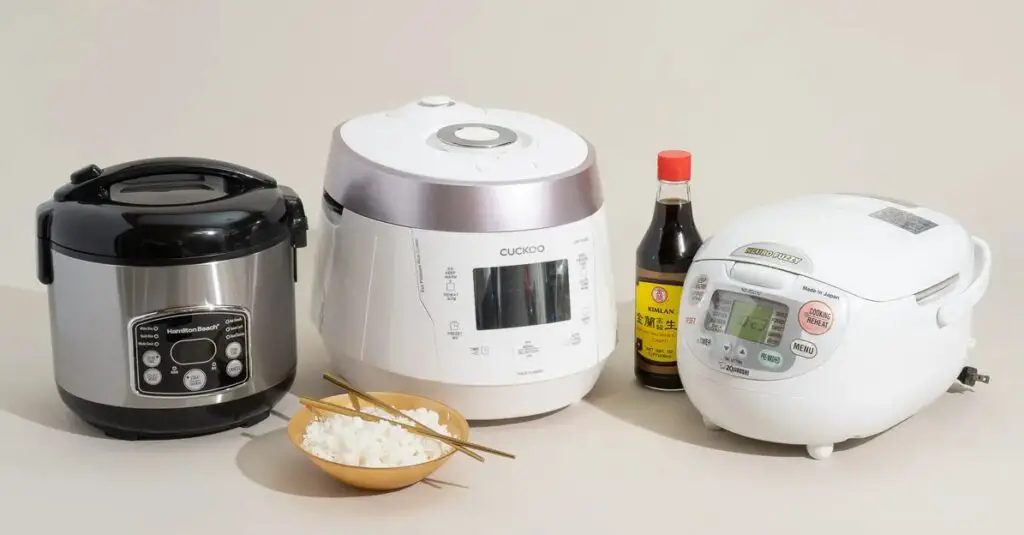
Tips for cooking wild rice
Below are a few recommendations for making sure your wild rice always comes out nicely.
Stirring
Stir the wild rice using a wooden spatula before turning on the rice cooker to be certain it gets cooked evenly. As a result, clustering or sticking is avoided, and all grains cook equally.
Leaving the wild rice to rest
Before removing the cover after the wild rice finishes cooking, give it a minimum of 10 minutes to cool down. By doing this, the wild rice gets more time to soak up any liquid that may still be present and to steam, giving it a lighter and uniform texture.
Rice fluffing
Wild rice should be fluffed with a fork once it has had time to rest. This assists in separating the grains and minimizing sticking. Should you observe any extra moisture, remove the rice cooker’s cover for a couple of minutes and let the steam out.
Cooking wild rice: preparation
The secret to a great and flawlessly prepared meal when cooking wild rice is the appropriate preparation. The procedures required before cooking wild rice in a rice cooker are specified below.
Rinsing
Wild rice should be well-rinsed before cooking. This aids in clearing the grains of any dirt that might have settled on them. Put the wild rice in a strainer and rinse it for a couple of minutes under cold running water, rubbing it using your hands to be certain all the grains are properly cleaned.
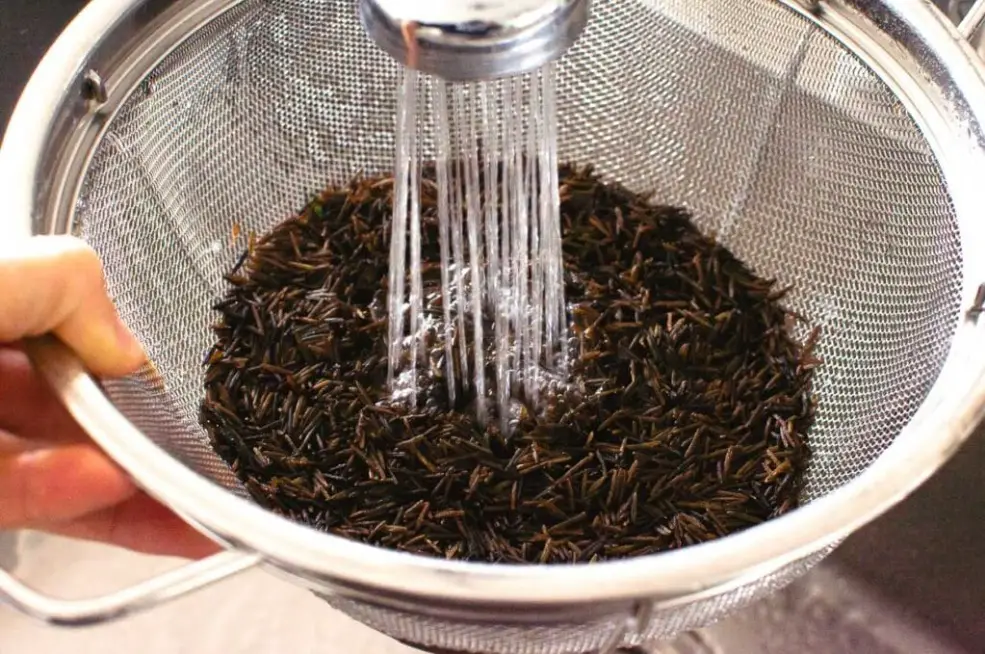
Soaking
Wild rice can benefit from soaking before cooking. It can speed up the process and make it more tender. Wild rice should be put in a container with cold water on top to soak. Soak wild rice for a minimum of 30 minutes. Rice’s tough outer layer can be softened and made simpler to break down by soaking it in water for at least eight hours.
Draining
Use a strainer to drain the wild rice after soaking. Before placing the rice in the rice cooker, make sure to shake off any extra water and give it some time to drain. Rice should be fully drained because too much water can compromise the grain’s texture and taste.
By implementing these easy instructions, you are ready to cook wild rice in a rice cooker and have a tasty and nourishing meal.
How to cook wild rice
Rice cooker method
Begin by lightly misting some cooking spray into the inside of the rice cooker bowl. This lessens the chance of the wild rice sticking.
The next step is to rinse your uncooked wild rice grains in cool, clear water. Any dirt or particles that had accumulated during storage are cleared out as a result. It is not compulsory to soak before cooking wild rice in a rice cooker.
Two cups of water are needed for every cup of wild rice. Usually, 1 cup of uncooked wild rice yields slightly more than 3 cups of cooked wild rice.
If your rice cooker is basic, simply press the button and wait for it to do its work. When the wild rice is finished, the button pops to notify you. 1 cup of wild rice requires around sixty minutes to prepare.
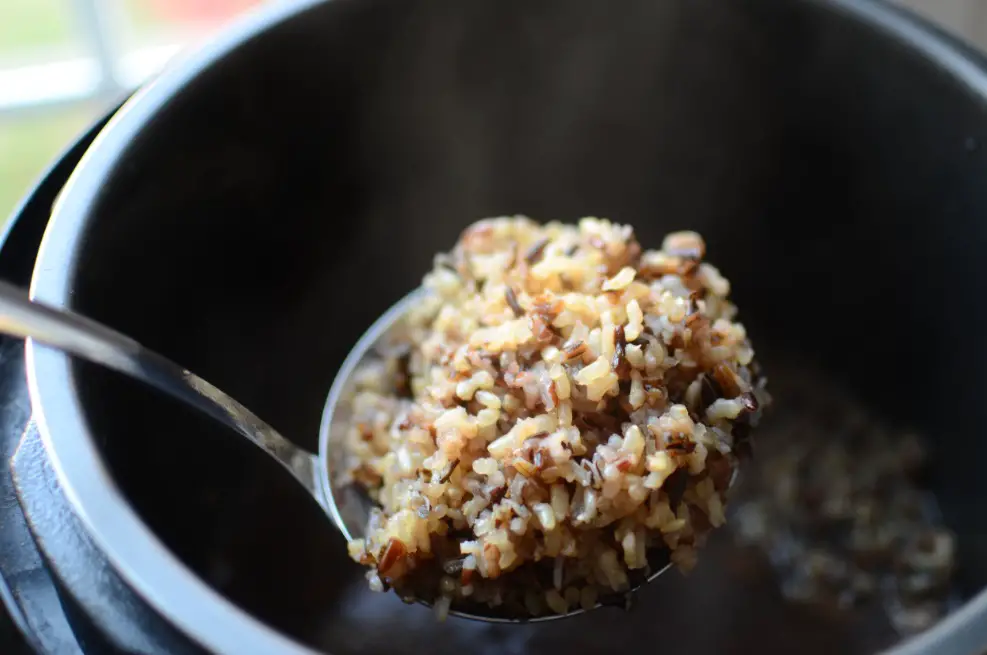
If your rice cooker has numerous settings, for instance, a fancy town model, you should select the “brown rice” setting before turning it on. One kind that has numerous settings and may be utilized for cooking wild rice is the Aroma rice cooker.
When it has finished cooking, take off the cover, fluff your wild rice using a fork, and then it is ready.
In mixtures with other varieties of rice, such as red/ brown rice blend, wild rice is frequently present. A similar liquid-to-rice ratio can be used if you have a wild rice blend.
Considering wild rice mix/wild rice blend may contain a different combination of ingredients, it could be required to add 1-2 tablespoons of water and simmer for an additional few minutes if it is still too firm after the cooking process.
Use vegetable broth or chicken stock rather than water to provide your cooked wild rice with additional flavor.
Microwave
It is unlikely to taste as good when microwaved compared to a rice cooker. It’s a simple choice, though, provided you’re in a rush. Combine a cup of wild rice with three cups of water in a container that can be heated in the microwave.
Wild rice gets microwaved for 45 minutes on medium. After the allotted time has passed, leave the wild rice for a couple of minutes and then discard any extra liquid. Use a fork to fluff it, then spice it to your liking.
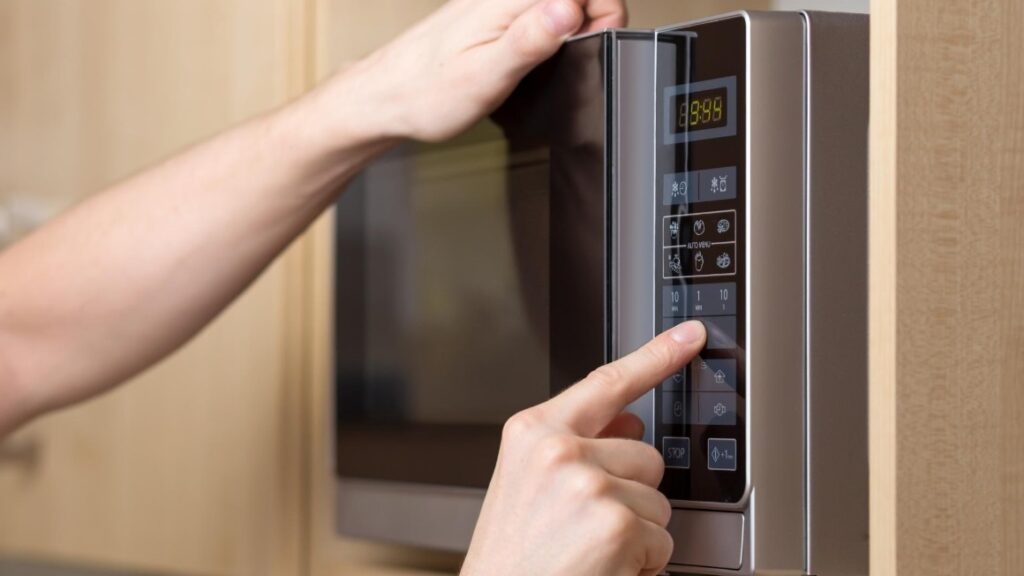
Stove
The most effective approach to achieve cooked wild rice on a stovetop is to initially boil some water and then introduce one cup of wild rice. Reduce the heat and allow to cook for 45 minutes.
A couple of minutes before the rice is done cooking, don’t forget to discard any water left.
Carbohydrates quantity in wild rice
Wild rice is the preferable side dish for any major dish, particularly if you are attempting to monitor the amount of carbohydrates you consume and cut back.
The amount of carbohydrates in one cup of cooked brown rice is 52 grams, while the amount in one cup of cooked white rice is 53 grams (not a significant increase).
In contrast, only 35 grams of carbs are found in one cup of wild rice (cooked). Therefore, it is ideal for people who wish to cut back on their carbohydrate consumption or lose weight.
Wild rice contains a lot of fiber. Fiber is renowned for giving you longer-lasting satisfaction. A reasonable serving (a cup of wild rice) along with your main course may help you avoid the need to snack in between meals if you decide to incorporate it into your daily meal planning.
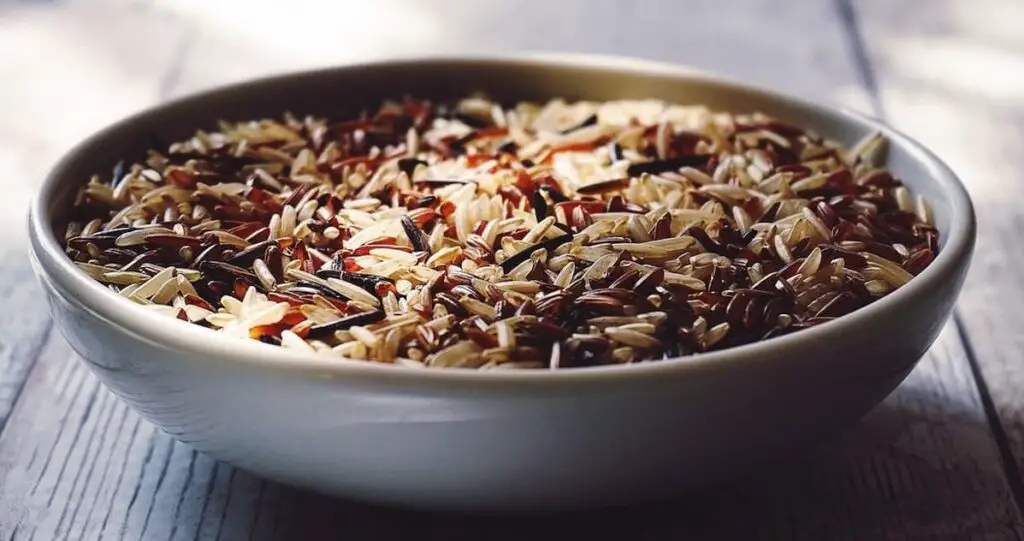
Can wild rice be toasted before being cooked?
Wild rice can indeed be toasted before being cooked, and, doing so, pulls out the grain’s nutty flavor. 1 cup of washed, drained wild rice is placed in an oven.
A mild browning is expected after 20 minutes of toasting. Wild rice is added to a pot of boiling water, after which the heat is turned down to medium-low. Cook wild rice until soft for about 45 minutes.
How to maintain a rice cooker
Reading the rice cooker published handbook for your rice cooker is the initial approach to cleaning it properly.
Disconnect it from the power source and let the cooking plate and other components cool before continuing. This could require as long as half an hour. You require warm water, an absorbent sponge, and an ordinary dishwasher. To properly dry off all of your rice cooker’s components, you additionally require a dry cleaning towel.
Abrasive scrubbing pads should be avoided since they can harm your rice cooker’s exterior. Bleach and other strong cleaning agents should also be avoided. They might harm your rice cooker.
The ideal method of cleaning often depends on its manufacturer and model, but you can follow the instructions below to do so.
In the pot, which has been removed from the base unit, add a little warm, soapy water. To release any trapped rice, give it some time to soak. Pry the sticky rice off with a spatula. Wash the pot using a sponge. Dry it after rinsing it using clean water. In the end, wash the rice cooker’s accessories with soap before rinsing them with fresh water.
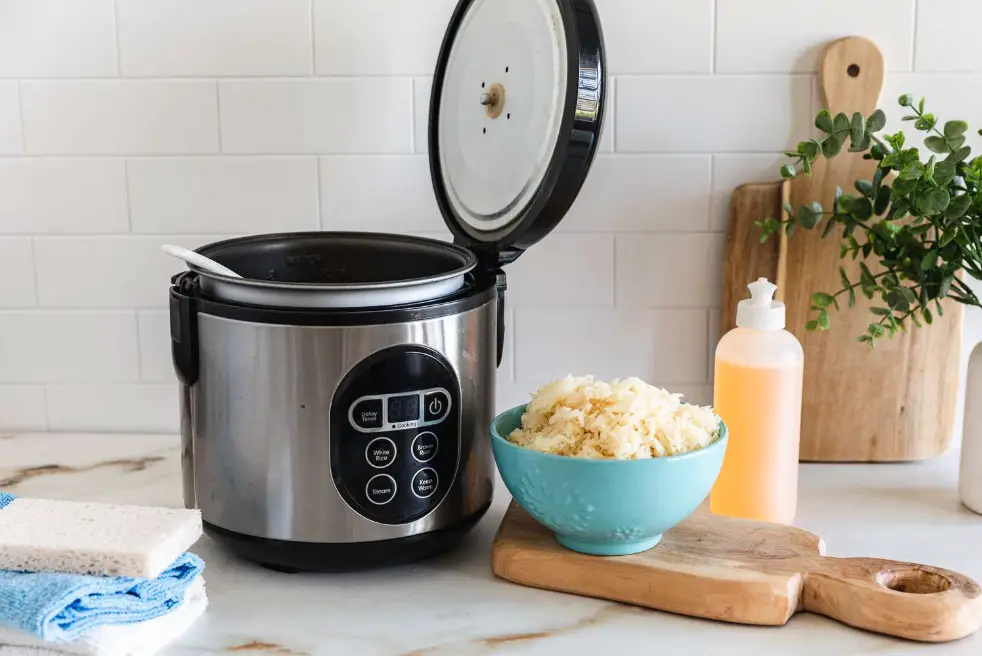
Your rice cooker’s cover may be removable or not based on the model. If the covers are removable, gently remove them and wash them in warm, soapy water. Rinse, then let them air dry. If it is impossible to remove the lid, open it up and clean it with a moist sponge immersed in soapy water. After removing the soap with a wet towel, place it outside to air dry.
Although we never advise touching the heating plate, you may lightly scrape it with sandpaper if it has food residue or stains on it. After that, wipe everything down using a moist towel to discard any crumbs or stains.
Avoid removing the food bits using a metal spoon or spatula. The surface of the hot plate may become scratched as a result. Additionally, take care to prevent moisture from entering, it as this could cause electrical issues. Use a spotless, dry towel to remove any extra moisture.
Employ a dry towel to clean the cord if it’s merely dirty, but keep the connector ends out of the process. If it is discolored, clean it with a gentle, moist sponge before wiping it dry. Avoid submerging or sprinkling the cord with water. Your rice cooker could become inoperable as a result of an electric shock or short circuit.
To deal with bad smell
You simply require vinegar and water to restore the smell of your rice cooker. Pour equal quantities of water and white vinegar into the sprayer to create a solution. Clean every part of your rice cooker after spraying immediately onto a dry towel. Avoid spraying right into the rice cooker.
Creating a mix of water and vinegar and pouring it into the pot is another effective method to eliminate offensive odors. Start the cooker and let the mixture come to a boil. When the solution is done boiling, take it off and allow it to cool.
After that, drain the contents out and give the pot a minimum of two thorough rinses with clean water. There won’t be any more odor. You ought to clean your rice cooker following each usage to fully enjoy it. This is done to avoid unpleasant odors, mildew, stains, and stubborn dirt that might be difficult to remove.

Additionally, the effectiveness and performance of a rice cooker are hindered by dust and food scraps, which defeats the purpose of owning one to start with.
To prevent odor, hard-to-remove food particles, and permanent stains, ensure to thoroughly scrub your rice cooker following each usage. To wipe down the various components of your rice cooker, merely utilize a dry cleaning towel and a basic household dishwashing soap.
Several brands advise washing the lid, container, and attachments in the dishwasher, but we solely suggest washing them manually.
Storage of wild rice
Wild rice may be preserved in the refrigerator for approximately seven days after cooking. Simply ensure it’s sealed up firmly in a container.
Additionally, it can be kept for a maximum of six months in the freezer. Utilize a freezer-safe container. Be certain that the wild rice is cooled before putting it in the freezer to avoid freezer burn.
It’s recommended to allow your wild rice to thaw in the refrigerator overnight before using it. It is possible to do it in the microwave if you neglected to do it in advance. The container should be covered and only a small amount of water added. In doing so, the grains regain their softness and fluffiness.
Serving ideas with wild rice
Wild rice goes well with chicken soup. The multiple aromas of the chicken soup mixture pair well with the wild rice.
- Seafood: The lighter, fresher taste of seafood goes well with the rice’s inherent, earthy qualities.
- Veggies: Wild rice’s natural aroma goes well with veggies that have been briefly steamed to preserve their flavor and freshness.
- Soups: Unlike when you prepare rice in soup broth for a longer period, wild rice rarely becomes sticky. When prepared, its rough exterior maintains its firmness.
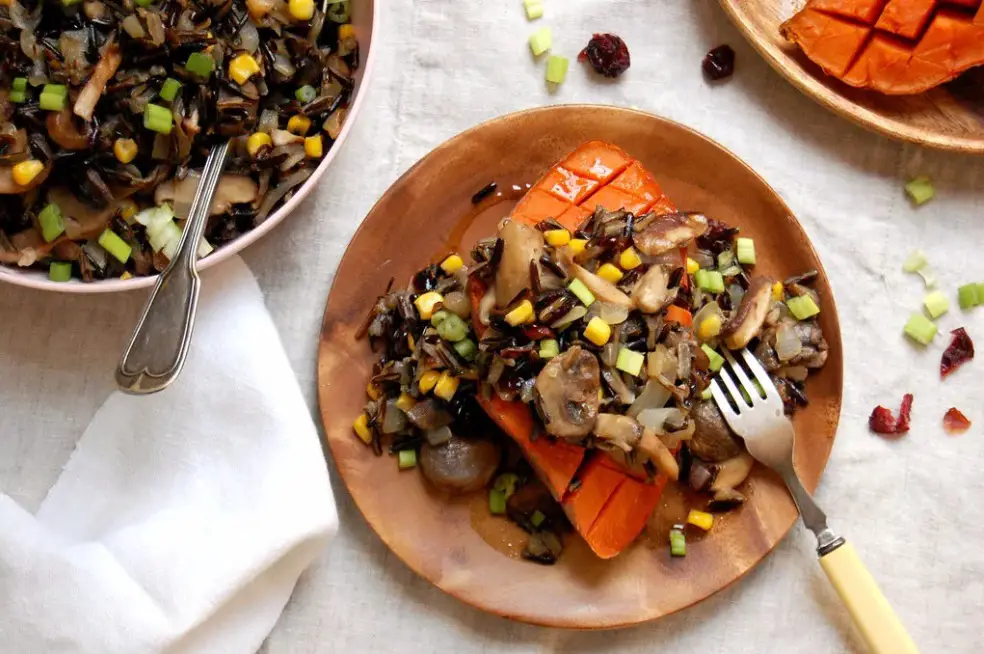
FAQ
Can I cook wild rice in my rice cooker?
It is possible to cook wild rice blend in a rice cooker with the brown rice setting, and the cooking time is approximately 45 minutes.
What is the ratio of water to wild rice?
When preparing wild rice in a rice cooker, understanding the proper water-to-wild rice ratio is crucial, which is usually 1:2. Every cup requires three more.
Important to keep in mind, though, is that the precise ratio may change based on the kind of wild rice you employ and the desired texture. The quantity of water required to effectively prepare certain kinds of wild rice may be greater than for other types.
It is advised that you comply with the directions on your wild rice pack if you want to obtain an ideal consistency and taste.
You may regularly begin with a ratio of 1:2 and make adjustments as necessary if you’re uncertain.
Should wild rice be soaked before cooking?
Soaking the wild rice before cooking is not necessary. Ahead of food preparation, rinse the rice to get rid of any dirt or debris.
In a pot, combine 2 cups of water or chicken broth with 1 cup of uncooked wild rice blend. You should have soft and cooked wild rice after a simmering/cooking time of 45–50 minutes.
How much water do I need for 1 cup of dry wild rice?
Verify your water/wild rice ratio is appropriate. You should use around two cups of water or chicken broth with vegetable oil for each cup of wild rice prepared in the rice cooker. If you fail to provide enough water, you won’t get cooked wild rice.
Additionally, wild rice becomes mushy if you add too much water, giving the mixture an unsatisfactory texture. You certainly don’t want that result.
If you’re interested not only in cooking wild rice in a rice cooker, but if you also would like to know how long the process of preparation takes, please follow the link.
Conclusion
Cooked wild rice offers a variety of benefits when consumed regularly. You may gain several health advantages by incorporating a cup of wild rice into your daily diet. The phosphorus concentration of wild rice is high, and it helps maintain healthy bones. You may be able to avoid stress fractures as a result of this.
Additionally, it aids in halting bone mass deterioration, making wild rice good for you. Vitamins that help maintain good immunity are abundant in wild rice. White blood cells are essential for the body’s defense against illness. Certain vitamins in the circulation act as an inducer of their creation.
It is significant to remember that cooking times can differ based on your location’s altitude. To guarantee that the wild rice gets cooked through, you may have to lengthen the cooking time, especially if you reside at a high altitude. Wild rice cooks faster in an Instant Pot compared to a stove.
Wild rice can be effortlessly and quickly cooked in the Instant Pot without continual attention. You can consistently get perfect-cooked wild rice with some practice.
Do you want to know about other ways of cooking wild rice in a rice cooker? If so, please open the link and read the article.

![Why Is My Rice Bubbling Like Soap? [Reasons & Solutions] 12 why is my rice bubbling like soap](https://ricecreamshoppe.com/wp-content/uploads/2023/04/why-is-my-rice-bubbling-like-soap-375x195.webp)






Leave a Comment